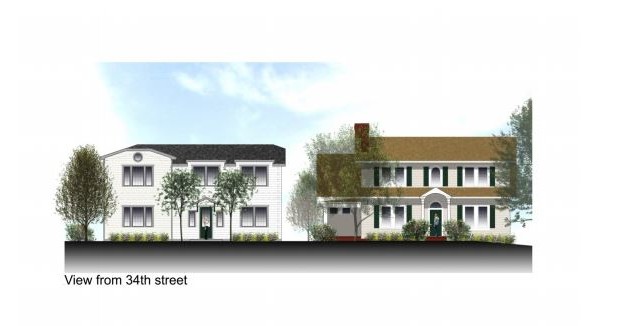Steck House compatibility will stay waived
Wednesday, March 9, 2016 by
Elizabeth Pagano The question of whether the city correctly interpreted city code may have divided Board of Adjustment members at their last meeting, but the panel seemed much more united on the topic of the code language, which will allow new construction in a setback due to historic zoning. In short: The board wasn’t too happy with it.
It was, in the end, a close vote, with board members Eric Goff, Melissa Neslund, James Valadez, Rahm McDaniel and Melissa Hawthorne voting to uphold staff’s interpretation of code and board members Brooke Bailey, William Burkhardt, Don Leighton-Burwell and Michael Von Ohlen voting in favor of the appeal. Von Ohlen, McDaniel and Hawthorne all said their votes were “reluctant.”
McDaniel steered away from saying that staff had misinterpreted the code; nonetheless, he didn’t seem entirely at ease with the end result of staff’s interpretation.
“It is entirely possible that you have a correct interpretation of poorly written code that fails to meet the intent that the code was written to serve. I think maybe that may be the situation here,” said McDaniel.
The case centered on a future development that is planned to surround the Steck House at 305 E. 34th St. The house is zoned historic and will be preserved, but developers plan to add three multifamily buildings to the property. Those buildings will be built within the 25-foot compatibility setback of a neighboring house at 309 E. 34th St., which is the heart of the dispute.
The city maintains that building in that setback is allowed due to the historic zoning of the Steck House because historic properties are exempt from compatibility setbacks.
Leon Barish appealed that interpretation to the Board of Adjustment and argued that the North University NCCD (Neighborhood Conservation Combining District) supersedes that part of the code. Although that would normally be the case, the NCCD does not explicitly address the front compatibility standards; however, Barish maintains it is implied that those standards are in effect.
Lynda Courtney, with the Development Services Department, explained the city’s position
“Staff has to review by explicit code, and cannot review by anything that is an implied code,” explained Courtney. “With the absence of proper language, it cannot be assumed that compatibility does apply.”
Planning and Zoning Department Director Greg Guernsey explained that if the historic zoning designation were to be lifted on the property, the NCCD would have more meaning. “If there was some calamity and a tornado wiped out the house on the lot and we are starting anew … then certainly this provision would have an effect,” he said.
Goff, who voted to uphold staff’s interpretation, said that he saw the code related to the compatibility standards as “unambiguous” and noted that the neighborhood had the opportunity to amend the NCCD but had not done so.
However, Mary Ingle, who is the president of the Austin Neighborhoods Council as well as a member of the North University Neighborhood Association, noted that the timing was complicated. She said the house was essentially designated historic in the midst of the NCCD being approved. “People didn’t really know. … This was never brought up to us that this provision applied to a historic-zoned property, the legal department never mentioned it, and City Council – I don’t know if they knew or not,” she said.
Hawthorne spoke as someone who has been through the NCCD process and said it was long and complicated.
“I do feel that we failed,” said Hawthorne. “An ordinance went through; another one came in midstream. I think it was really clear what the intent was, and if they had known the historic case was there, they could have cleaned it up. I really feel very badly about this. But I really feel that, in reading the written word, that staff did not err.”
Neslund expressed sympathy for the neighborhood but also could not find evidence that staff had acted in error.
“I think, frankly, this is just a bad situation,” said Neslund. “This is not what the neighborhood wanted, but purely from a code standpoint and city staff reviewing the plans, I feel like they reviewed the city code. … I think it’s another example of our convoluted code that has multiple sections strewn about.”
Image courtesy of the city of Austin
You're a community leader
And we’re honored you look to us for serious, in-depth news. You know a strong community needs local and dedicated watchdog reporting. We’re here for you and that won’t change. Now will you take the powerful next step and support our nonprofit news organization?








